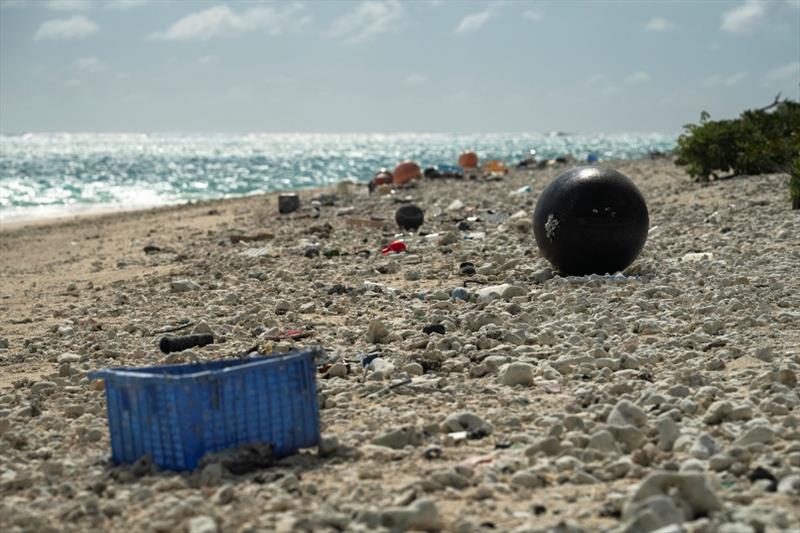
Science blog: Removing marine debris on midway
by Kelly Williams, NOAA Fisheries 3 Nov 2018 12:30 UTC

Mission removing marine debris on Midway Atoll © NOAA Fisheries
Once again, our marine debris team split—one team of five stayed at Midway Atoll and one team of ten departed on the vessel Imua to clean up land debris on other islands. They went to Kure, Pearl and Hermes, Laysan, Lisianski, and French Frigate Shoals in the Northwestern Hawaiian Islands.
Here on Midway, we like to refer to ourselves as the "Midway Furious Five." We are on a mission to rid the land and sea of marine debris!
So far, we have been very busy. Once again, we had some awesome weather here so we decided to take full advantage and finish some of our swim surveys along the emergent reef at the edge of the atoll. We were quick to find nets all over the reefs and filled the boats six feet high with net!
After finding so many nets on the reef, it was time to finish land debris removal on Spit Island. We finished cleaning the rest of the island within a couple of hours, and headed back to sort through most of the nets, buoys, and bulky items we collected over the past couple of weeks.
So far, we have more than 600 buoys collected from Eastern and Spit Islands. Since our time here is limited, we will sort through most of the plastics we have collected once we get back to Honolulu.
We just started on Sand Island, the largest and only habited island here at Midway. There is quite a bit of debris on the beaches here and our backs are feeling it.
When we first spotted some nets on the beach today, we thought they would be easy to pull out and remove, but soon discovered that they were buried deep in the sand. Luckily, we had some teammates who were seemingly born to dig, and those nets didn't stand a chance! Some of the other interesting finds from the land debris here included: a toy horse, port-a-pottys, lots of toys, fishing gear, bottle caps, plastic bags, and plastic chairs.
As we turn in for the night, we are all exhausted but excited to get back out there and clean the beaches tomorrow. Our time is so valuable here, we really cherish the experience and focus on the critical importance of cleaning up marine debris from the land and sea.